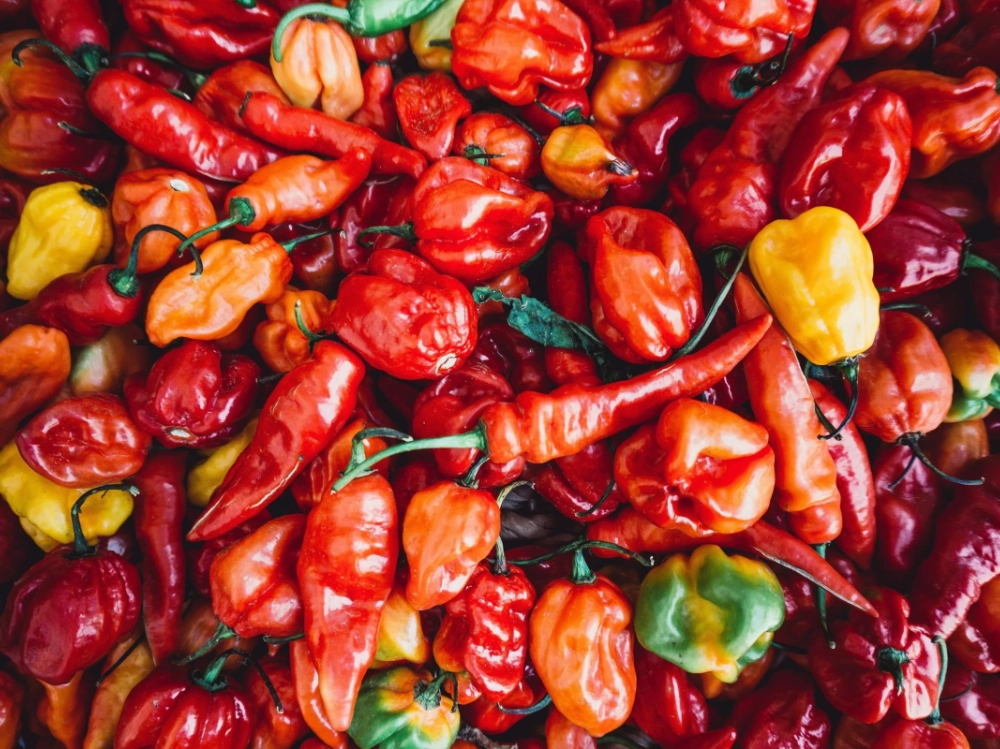Hot peppers are a popular addition to many dishes, adding a fiery kick of flavor. If you’re a hot pepper enthusiast or a farmer looking to boost your pepper crop, you may be wondering how to increase hot pepper yield. Fortunately, there are several strategies you can employ to maximize your harvest. In this article, we’ll explore some effective techniques to help you grow more hot peppers.
1. Choose the Right Variety
When it comes to hot peppers, not all varieties are created equal. Some varieties are naturally more productive than others. Before planting, do some research and select a hot pepper variety known for its high yield. Popular high-yielding varieties such as Thunder Mountain Longhorn, Aji Lemon, Habanero, Trinidad Scorpion, and Carolina Reaper.
2. Provide Adequate Sunlight
Hot peppers thrive in warm and sunny conditions. Ensure that your plants receive at least 6 to 8 hours of direct sunlight each day. If you’re growing peppers indoors, consider using Viparspectra grow lights to supplement natural sunlight and provide the necessary light intensity.
3. Optimize Soil Conditions
Healthy soil is the foundation for an abundant harvest of hot peppers. Prior to planting, prepare your soil by incorporating organic matter, such as compost or well-rotted manure, to improve its fertility and drainage. Hot peppers prefer a slightly acidic soil with a pH between 5.8 and 6.5. Regularly test your soil’s pH levels and make adjustments if necessary.
4. Adequate Watering
Proper watering is crucial for hot pepper plants. They require consistent moisture, but be careful not to overwater as it can lead to root rot. Water deeply and evenly, allowing the top inch of soil to dry out between waterings. Mulching around the plants can help retain soil moisture and reduce weed competition.
5. Implement Proper Plant Spacing
Hot pepper plants need adequate space to grow and develop. Crowded plants can lead to poor air circulation and increased susceptibility to diseases. Follow the recommended spacing guidelines for your specific pepper variety to ensure each plant has enough room to thrive.
6. Fertilize Regularly
Providing your hot pepper plants with the right nutrients is essential for a healthy yield. Apply a balanced fertilizer, rich in nitrogen, phosphorus, and potassium, according to the manufacturer’s instructions. Avoid over-fertilizing, as it can result in excessive foliage growth at the expense of fruit production. You should also check out our post on the best organic fertilizers for peppers.
7. Prune and Support Plants
Pruning and supporting your hot pepper plants can help increase yield. Pinch off excess foliage or side shoots that emerge on the main stalk near the base of the plant to direct the plant’s energy towards fruit production. Additionally, using stakes or cages to support the plants can prevent branches from breaking under the weight of the peppers.
8. Monitor and Control Pests and Diseases
Pests and diseases can significantly impact hot pepper yield. Regularly inspect your plants for signs of pests, such as aphids or caterpillars, and take appropriate measures to control them. Additionally, practice good garden hygiene, remove any diseased plants or fallen debris promptly, and consider using organic pest control methods such as neem oil or insecticidal soap.
9. Harvest at the Right Time
Knowing when to harvest your hot peppers is crucial for maximizing yield and flavor. Each hot pepper variety has its own optimal harvesting time, usually indicated by a change in color. Harvest the peppers when they have reached their desired color and size, but before they become overripe or start to shrivel.
10. Rotate Crops
Rotating your hot pepper crops each year can help prevent the buildup of pests and diseases in the soil. Avoid planting hot peppers in the same location for consecutive years. Instead, rotate them with other unrelated crops to maintain soil health and minimize the risk of pest and disease problems.
By implementing these strategies, you can increase your hot pepper yield and enjoy a plentiful harvest. Remember to choose the right variety, provide adequate sunlight and water, optimize soil conditions, fertilize regularly, prune and support plants, monitor pests and diseases, harvest at the right time, and rotate your crops. With proper care and attention, your hot pepper plants will thrive and reward you with an abundance of fiery peppers.





